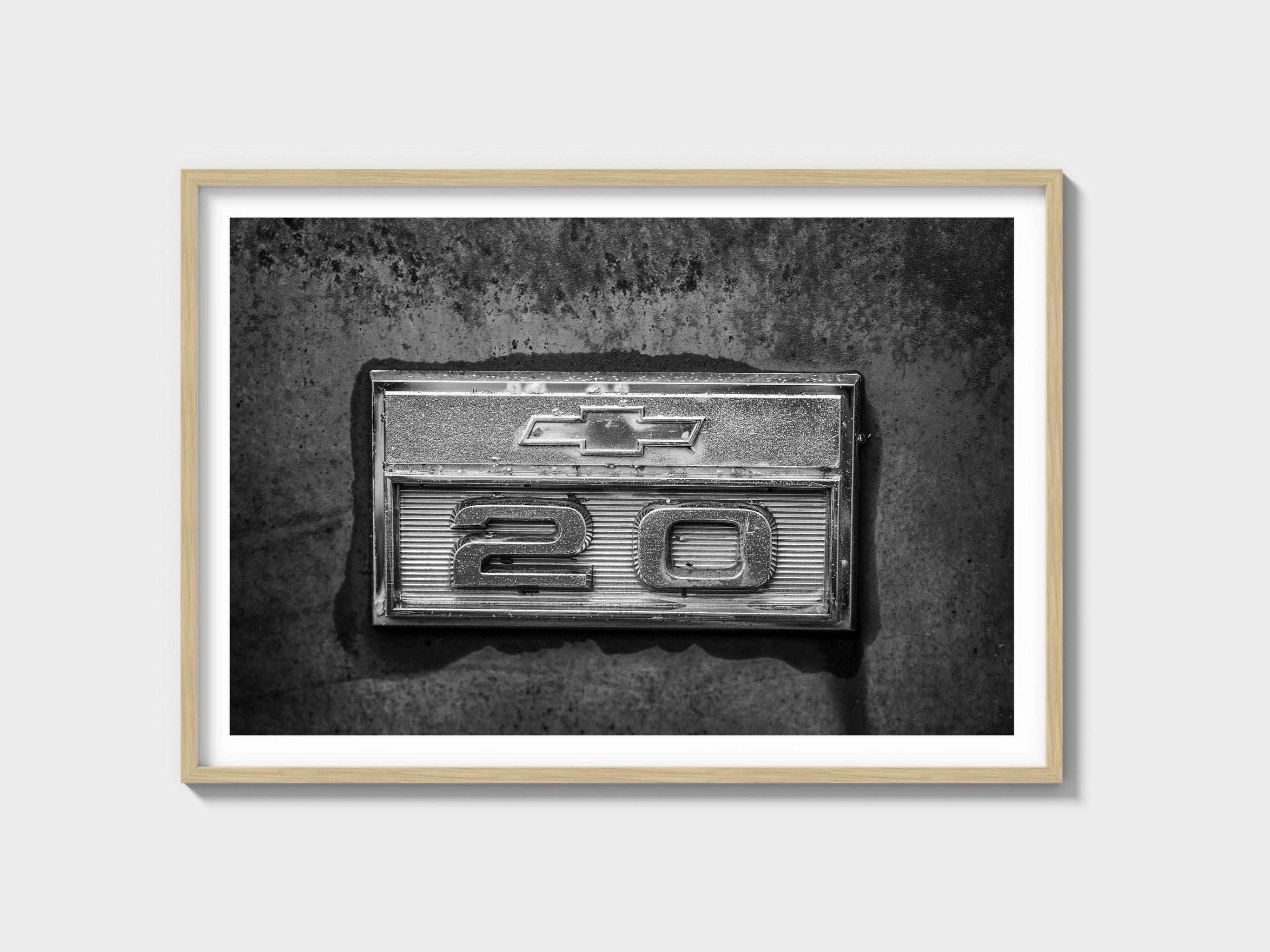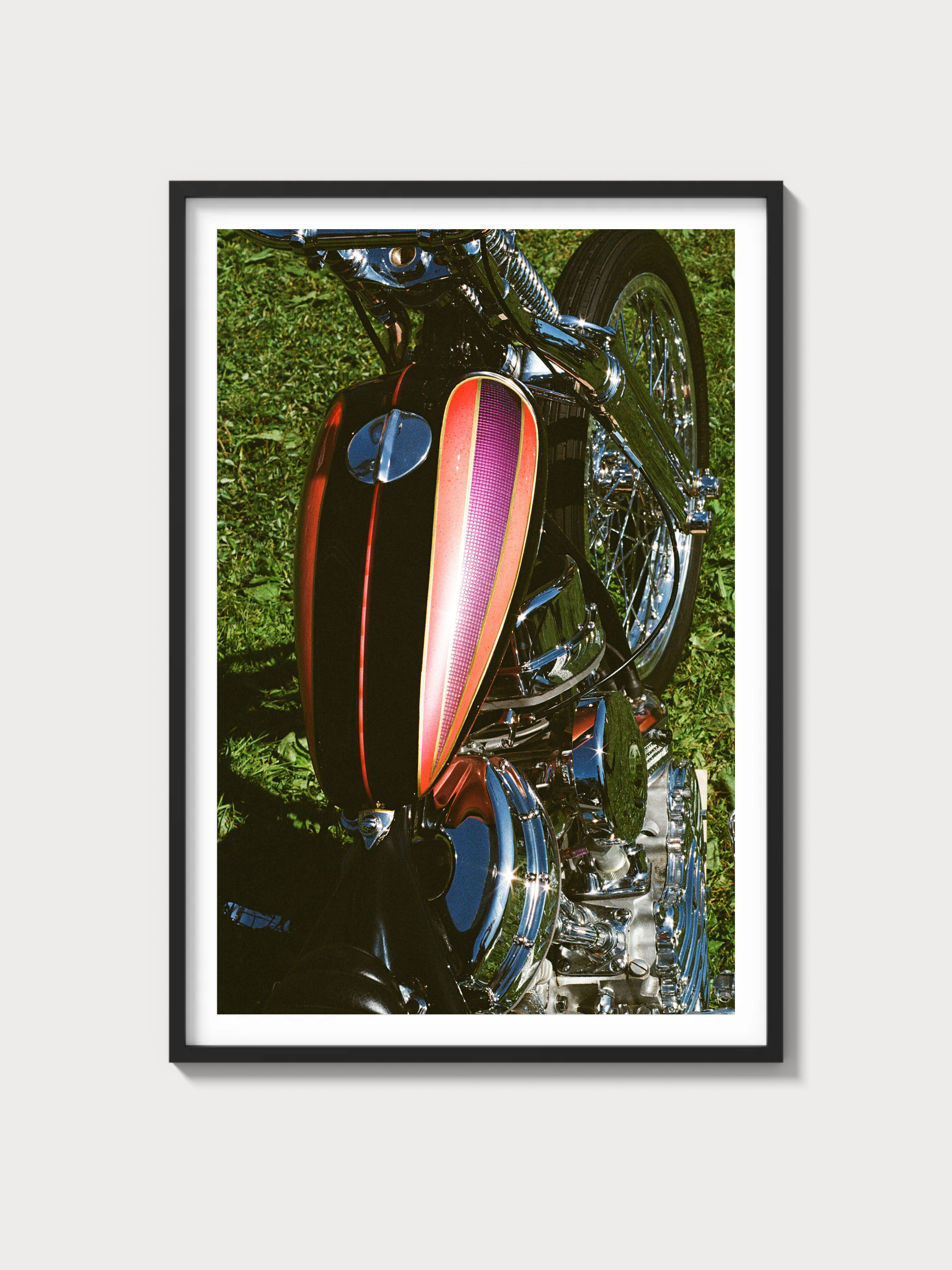2000–2006 Chevrolet Tahoe Base (GMT800): History, Specs, and the Enthusiast’s Perspective
Historical Context and Development Background
The 2000 model year ushered in the second-generation Chevrolet Tahoe on GM’s GMT800 platform, a wholesale rethink of the full-size SUV formula. Hydroformed frame rails, tighter body tolerances, improved NVH isolation, and a thoroughly modern Gen III small-block V8 family moved the Tahoe decisively beyond the GMT400-era truck it replaced. The Tahoe sat beneath the Suburban in size, and alongside the GMC Yukon, sharing the lion’s share of its architecture, driveline, and interior.
Design-wise, the GMT800 Tahoe leaned into rounded aero surfaces and tighter panel gaps, aided by the new frame’s dimensional accuracy. Inside, it delivered the more carlike driving position and ergonomics buyers wanted, but retained truck-grade durability and a simple control layout. While there was no factory motorsport program for the Tahoe, its underpinnings saw heavy-duty use in police fleets (PPV/SSV) and demanding service roles that effectively served as endurance testing in the real world. The Tahoe’s competitive set included the Ford Expedition (U222), Toyota Sequoia (first generation), and Dodge Durango. Against those, Chevrolet banked on powertrain depth, towing confidence, and a notably compliant ride courtesy of the Tahoe’s coil-sprung live rear axle—a key differentiator from leaf-sprung pickups of the time.
Engine and Technical Specifications
All Tahoe Base models used GM’s Gen III small-block architecture—aluminum heads, cathedral ports, and a deep-skirt iron block—with sequential fuel injection. The 2WD Base typically carried the 4.8-liter LR4 as standard in many years, with the 5.3-liter LM7 widely available or standard depending on drivetrain and trim. A 4L60‑E four-speed automatic was universal across the line, with an available Autotrac two-speed transfer case (NV246) offering 2HI/Auto/4HI/4LO.
| Engine code | Configuration | Displacement | Horsepower | Torque | Induction | Redline / limiter | Fuel system | Compression | Bore / Stroke |
|---|---|---|---|---|---|---|---|---|---|
| Vortec 4800 (LR4) | 90° OHV V8, iron block, alum. heads | 4.8 L (294 cu in) | Approx. 275–285 hp (year-dependent) | Approx. 290–295 lb-ft | Naturally aspirated | ~5800 rpm (factory limiter) | Sequential multi-port injection | ~9.5:1 | 96.0 mm x 83.0 mm (3.78" x 3.27") |
| Vortec 5300 (LM7/L59) | 90° OHV V8, iron block, alum. heads | 5.3 L (325 cu in) | Approx. 285–295 hp (year-dependent) | Approx. 325–335 lb-ft | Naturally aspirated | ~5800 rpm (factory limiter) | Sequential multi-port injection | ~9.5:1 | 96.0 mm x 92.0 mm (3.78" x 3.62") |
Notes: The L59 is the flex-fuel variant of the LM7. No displacement-on-demand/AFM was employed on Tahoe engines in this generation. Typical axle ratios were 3.42 or 3.73, with towing packages skewing toward the latter.
Driving Experience and Handling Dynamics
On the road, a Base Tahoe with the LR4 is adequate and responsive in everyday use, while the LM7 5.3 feels more effortless with a fuller midrange—particularly appreciated with passengers and gear aboard. The 4L60‑E’s wide 3.06:1 first gear helps mask mass off the line; kickdowns are prompt if not especially subtle. Calibration improved through the facelift years, with later trucks generally exhibiting crisper shift logic.
Steering is traditional recirculating-ball with variable-assist—light at parking speeds, predictable at highway pace. The Tahoe’s dynamic calling card is its rear suspension: a coil-sprung, five-link, solid axle that delivers a notably more settled ride than leaf-sprung contemporaries. ZW7 “Premium Smooth Ride” self-leveling dampers and Z55 Autoride (real-time electronically controlled damping) were available on upper trims; Base models rode on conventional shocks but still struck a rare balance between compliance and control. Body control is better than its size suggests, with roll well managed until the limits of the all-season tires. The Autotrac transfer case’s Auto 4WD mode is unobtrusive on wet or mixed surfaces, and the 2.72:1 low range gives genuine traction for slow going. Brakes are four-wheel discs with ABS; pedal feel is consistent and fade resistance is appropriate for the Tahoe’s intended use.
Full Performance and Chassis Specifications
| Spec | 4.8L LR4 (typical Base, 2WD) | 5.3L LM7 (common Base/LS, 4WD) |
|---|---|---|
| 0–60 mph | ~9.0–9.5 sec (vehicle/load dependent) | ~8.5–9.0 sec (vehicle/load dependent) |
| Top speed | ~98 mph (electronic limit; tire-rated) | ~98 mph (electronic limit; tire-rated) |
| Quarter-mile | ~16.8–17.2 sec @ ~80–83 mph | ~16.5–16.9 sec @ ~82–84 mph |
| Curb weight | ~4,900–5,200 lb | ~5,200–5,600 lb |
| Layout | Front-engine, rear-wheel drive | Front-engine, four-wheel drive (Autotrac) |
| Brakes | 4-wheel discs with ABS | 4-wheel discs with ABS |
| Suspension (front) | Independent SLA; coil springs (2WD) | Independent SLA; torsion bars (4WD) |
| Suspension (rear) | 5-link live axle; coil springs | 5-link live axle; coil springs |
| Gearbox | 4L60‑E 4-spd auto (3.06/1.63/1.00/0.70) | 4L60‑E 4-spd auto (3.06/1.63/1.00/0.70) |
| Transfer case (4WD) | — | NV246 Autotrac, 2HI/Auto/4HI/4LO, 2.72:1 low |
| Max tow rating | Up to ~6,500 lb (properly equipped) | Up to ~7,700 lb (properly equipped) |
Variant and Trim Breakdown (GMT800 Tahoe Family)
“Base” denoted the entry equipment level beneath LS and LT, but the Tahoe line also included specialty trims and fleet packages. Production numbers by individual trim are not publicly broken out by GM; where exact figures were not published, N/A is noted.
| Trim / Package | Years (GMT800) | Drivetrain | Engine | Key differences | Production | Markets |
|---|---|---|---|---|---|---|
| Base | 2000–2006 | RWD or 4WD | 4.8L LR4 std (many 2WD); 5.3L LM7 avail. | Cloth interior, basic audio, 16-inch wheels, manual climate (early), minimal body trim | N/A | NAFTA, Middle East, others |
| LS | 2000–2006 | RWD or 4WD | 5.3L common | Power accessories, alloy wheels, expanded audio; popular retail spec | N/A | Global (regional availability varies) |
| LT | 2000–2006 | RWD or 4WD | 5.3L | Leather, Bose audio, available Autoride Z55, more airbags/security features as options | N/A | Global (regional availability varies) |
| Z71 Off-Road | 2001–2006 | 4WD | 5.3L | Off-road shocks/springs, skid plates, tow hooks, all-terrain tires, unique trim/badging | N/A | Primarily North America |
| Police Pursuit Vehicle (PPV) | GMT800 era | RWD (lowered ride height) | 5.3L | Heavy-duty cooling/electrical, pursuit-calibrated ABS/ESC (where fitted), high-read speedo; limiter varies with tire rating | N/A | Fleet |
| Special Service Vehicle (SSV) | GMT800 era | 4WD | 5.3L | Heavy-duty cooling/electrical, off-road-capable duty spec, equipment upfit prep | N/A | Fleet |
Note: The Tahoe Limited/Z71 models sold in the 2000 calendar year were based on the outgoing GMT400 platform; they are distinct from the GMT800 Tahoe covered here.
Ownership Notes: Maintenance, Parts, Restoration
- Powertrain durability: The LR4/LM7 small-blocks are fundamentally robust. Common age-related items include intake valley knock sensor moisture intrusion, throttle body and MAF cleaning needs, and occasional cold-start piston slap (typically harmless).
- Transmission: The 4L60‑E is widely supported and rebuildable. Known wear points include the reaction sun shell and 3-4 clutch pack in heavy service; fluid condition is critical.
- 4WD hardware: NV246 Autotrac units can suffer from “pump rub” wear-through at the rear case half; preventive plates or updated parts are common remedies.
- Chassis: Intermediate steering shaft clunk is well known and addressed with revised shafts or lubrication kits. Front hub assemblies (4WD) and lower ball joints are typical wear items.
- Brakes: Four-wheel discs are straightforward. Parking brake shoe delamination and drum-in-hat adjustment issues are common and inexpensive to resolve.
- Electrical: Instrument cluster stepper motor failures were widespread on early-mid 2000s GM trucks; many were serviced under special coverage programs. Fuel level sender wear and ABS module solder joint issues crop up with age.
- HVAC and ride control: Blend door actuators and, on Autoride-equipped models, rear shocks/compressor can require replacement; Base models without Autoride are simpler to maintain.
- Body/interior: Liftgate glass hinges and rear wiper motors are routine fixes. Seat tracks and power adjusters can loosen with mileage but are repairable with readily available parts.
Service intervals (typical): engine oil 5,000–7,500 miles (shorten for severe duty/towing), transmission fluid/filter around 50,000 miles (severe/service use), transfer case and differentials ~50,000 miles (severe), coolant ~5 years/150,000 miles (Dex-Cool), spark plugs ~100,000 miles (iridium). Timing is chain-driven and seldom needs attention under normal use.
Parts availability is excellent. Mechanical restoration is straightforward, with a deep aftermarket for suspension refresh, towing upgrades, and brake components. Electrical refurbishment (clusters, ABS modules) is also well supported.
Cultural Relevance and Market View
The GMT800 Tahoe became a staple of municipal fleets and a familiar presence in film and television, often cast in law-enforcement, security, or suburban family roles. That ubiquity is the point: it’s an SUV that did the job without theatrics. Enthusiasts appreciate the LS-based engines, body-on-frame serviceability, and the Tahoe’s uniquely comfortable coil-spring rear suspension.
Collector interest focuses on condition, originality, and spec. Clean, low-mile Base trucks appeal for their simplicity, while Z71 and properly preserved PPV/SSV examples draw attention among niche buyers. Sales at public auctions have historically reflected condition more than trim—exceptional low-mileage examples can command a distinct premium over driver-grade trucks. Documentation, rust-free chassis, and unmodified drivelines are the key value drivers.
FAQs
Was the 4.8L underpowered in the Tahoe?
The LR4 4.8L is competent for everyday use and light towing. The 5.3L LM7 offers noticeably stronger midrange and is preferred for frequent towing or fully laden driving.
Did these engines have Active Fuel Management (AFM) or cylinder deactivation?
No. GMT800 Tahoe V8s (LR4/LM7/L59) did not use AFM. That feature arrived later on other GM truck applications.
What problems should I look for on a high-mile GMT800 Tahoe?
Check for 4L60‑E shift flare or harsh 2-3 upshifts, Autotrac transfer case noises or fluid leaks (pump rub), instrument cluster gauge erratic behavior, ABS module faults, fuel level sender inaccuracies, steering shaft clunk, and rust on brake/fuel lines in road-salt regions.
How fast is a stock 2000–2006 Tahoe?
Expect roughly mid‑to‑high 8‑second 0–60 mph performance for 5.3L trucks, and around low‑9s for 4.8L examples. Most are electronically limited to about 98 mph, tied to tire speed ratings.
What is the maximum tow rating?
When properly equipped, 5.3L models can be rated up to approximately 7,700 pounds. 4.8L trucks are typically lower, around the mid‑6,000‑pound range. Axle ratio, cooling package, and hitch class determine the exact figure.
Which suspension did the Base model use?
All GMT800 Tahoes use an independent front suspension and a coil‑sprung, five‑link live rear axle. Base trucks use conventional shocks; ZW7 self‑leveling and Z55 Autoride were options on higher trims.
Is the 4L60‑E reliable?
Yes, when serviced and not abused. It’s widely rebuildable with stronger aftermarket internals. Heat and neglected fluid are the usual culprits behind premature wear.
What fuel economy should I expect?
Real-world consumption varies with gearing and usage. The 5.3L/4WD combination is the least frugal; 2WD/4.8L trucks do better in steady-state cruising. Proper maintenance (O2 sensors, MAF cleanliness, tire pressure) materially affects results.
Any differences between PPV/SSV and retail Base trucks?
PPV (RWD) and SSV (4WD) add heavy-duty cooling, electrical capacity, unique calibrations, and pursuit/service-ready equipment provisions. Ride height, tire rating, and stability/ABS programming can differ from retail-spec trucks.

















































